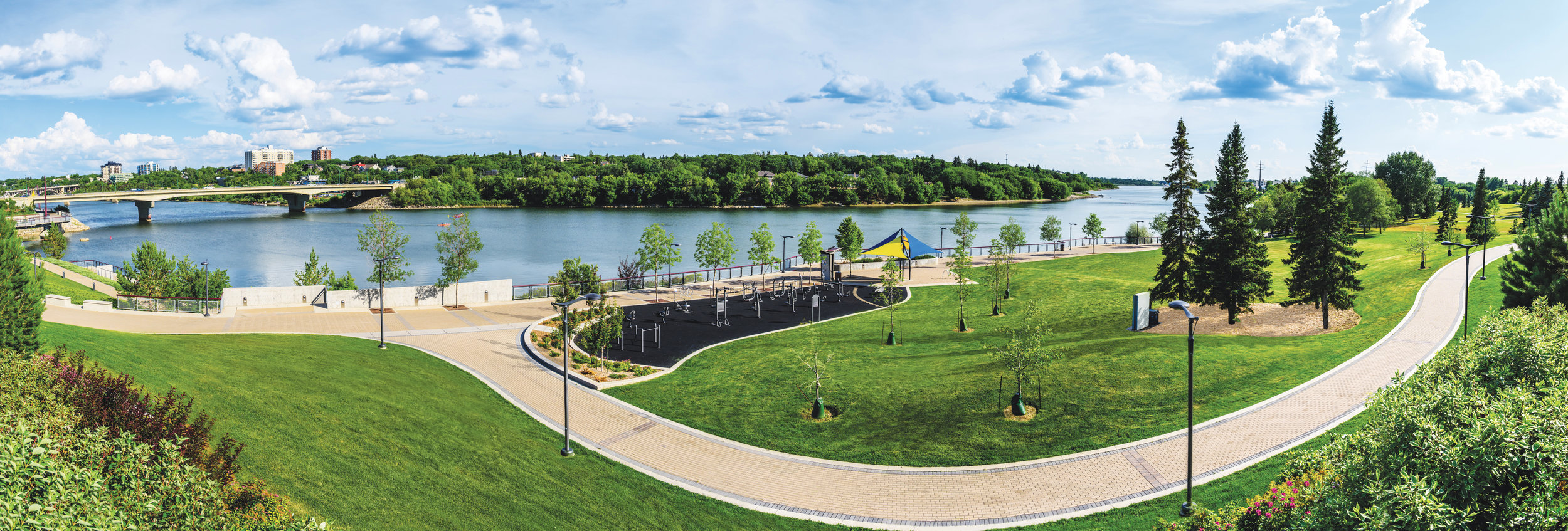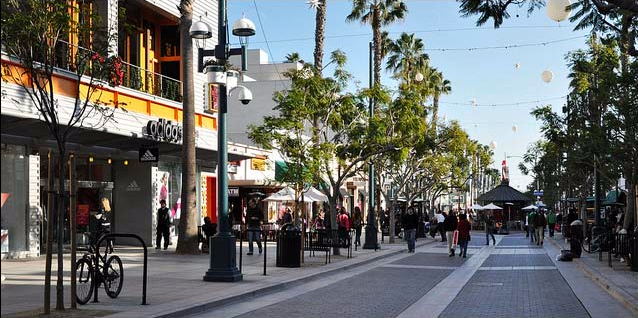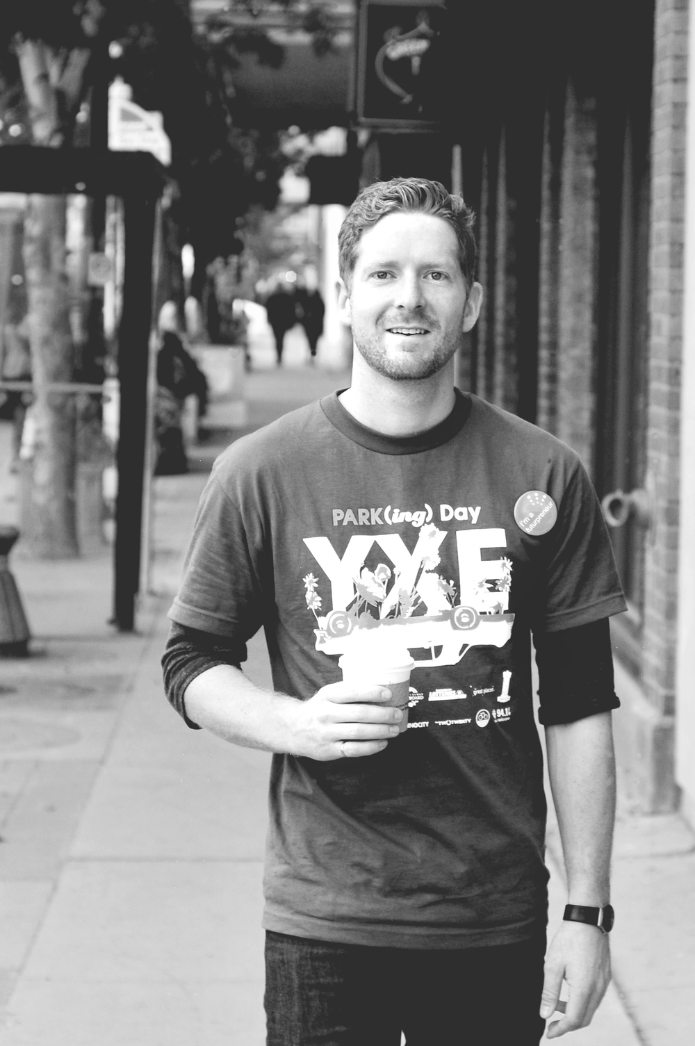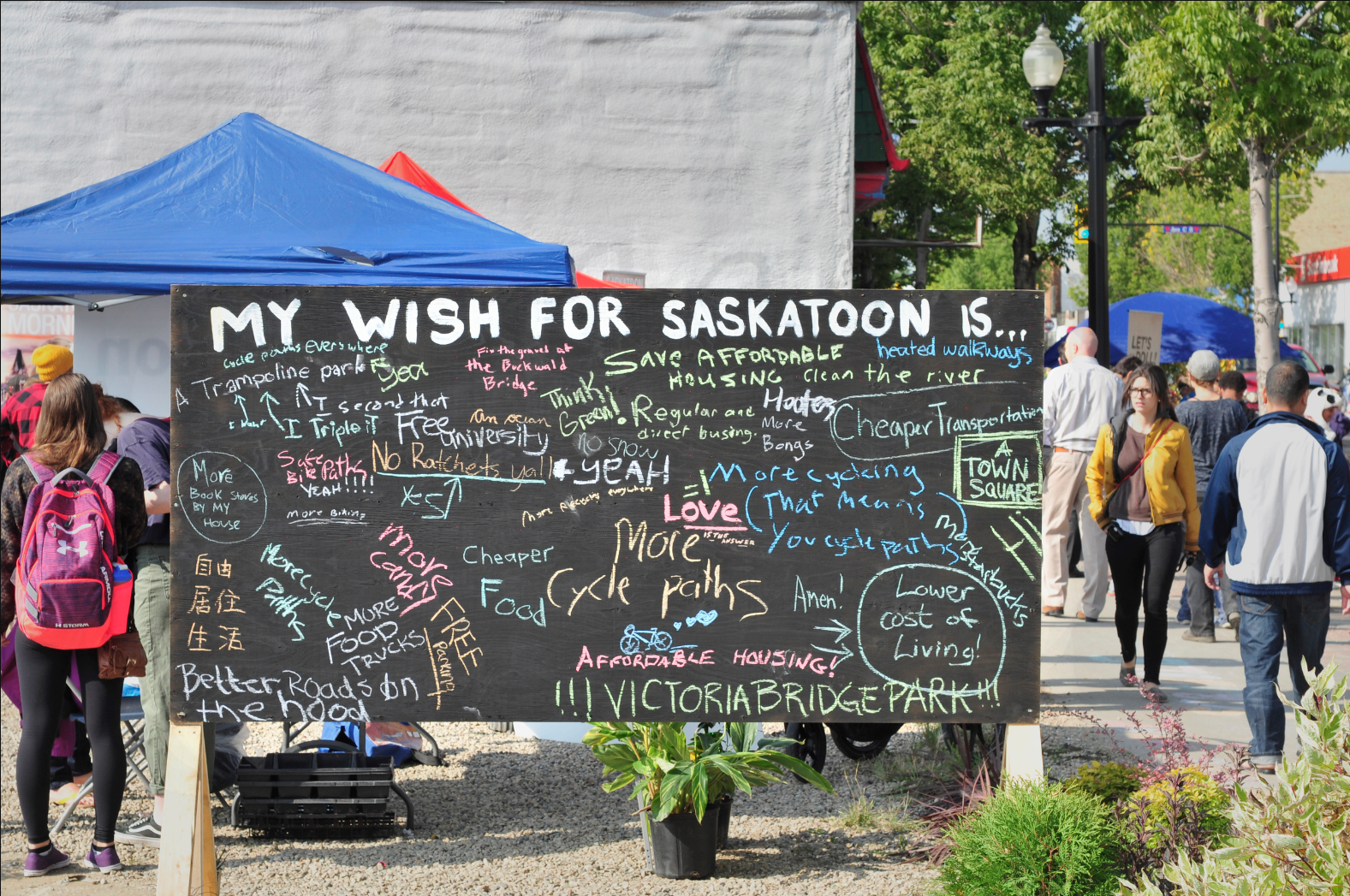Why Walkability Matters
“At Shift Development, you may have heard us say that we only work on projects that we can walk to. Here’s why such a basic concept can be so critical when choosing where you want to live.”
It’s summer. And with the exception of long drives out to the lake (for which I am eternally grateful), the car stays in the garage. You see, I’m blessed to live in one of Saskatoon’s few neighbourhoods that is considered “walkable.”
Walkability is far from a loose concept referring to one’s ability to access a few amenities by foot. Since the 1960s when Jane Jacobs first extolled the virtues of intimate, mixed-use neighbourhoods, walkability has been a measuring stick for urbanists and planners striving to foster communities that are healthy and diverse. At Shift Development, you may have heard us say that we only work on projects that we can walk to. Here’s why such a basic concept can be so critical when choosing where you want to live.
The following comes directly from the website and app WalkScore, but there are countless other sites and research that determine the walkability of a place based on this criteria:
- A centre: Walkable neighbourhoods have a center, whether it's a main street or a public space.
- People: Enough people for businesses to flourish and for public transit to run frequently.
- Mixed income, mixed use: Affordable housing located near businesses.
- Parks and public space: Plenty of public places to gather and play.
- Pedestrian design: Buildings are close to the street, parking lots are relegated to the back.
- Schools and workplaces: Close enough that most residents can walk from their homes.
- Complete streets: Streets designed for bicyclists, pedestrians, and transit.
Photo by David Stobbe
Most of these are features we consider when buying a home. Shift Development has been in a love affair with Riversdale precisely because of the characteristics that make it walkable. It is centred around the bustling activity of 20th Street West, with an abundance of restaurants, hot spots, retail, art galleries and studios. There are people from diverse backgrounds, mixed income and mixed use, narrow streets and an intimate scale that all contribute to its walkability.
Perched right on the riverbank and in the heart of Riversdale, Element Urban Village is a shining example of how choosing a walkable living space can enhance our overall lifestyles. At a score of 79 (considered very walkable), the location and design of these homes makes it easy to stay active and connected to the people and places of the neighbourhood. Similarly, that lifestyle was forefront in our minds when we created The Shift Home (very walkable at 84), The Two Twenty (a "walker's paradise" at 97), and Mosaic (95). In addition to previous projects, we scored an average of 89.4 on WalkScore!
The view from Element Urban Village. Photo by Matt Braden
Why is this so important to us?
Because we're in agreement with the countless studies by planners, academics and community builders who claim that higher walk scores translate into healthier lives, economic benefits, and sustainable practises. Here's a super brief overview of the benefits they list:
1. Health
- Did you know the average resident of a walkable neighborhood weighs 6-10 pounds less than someone who lives in a sprawling neighborhood? (WalkScore)
- Doctors are “desperate to get the population moving” as a means of addressing North America’s cardiovascular health issues. They connect the simple act of walking as a response, but acknowledge the huge role that neighbourhood design plays in making a simple lifestyle choice more or less available to people. Read more here!
- Get happy! One of my favourite reads Happy City: Transforming Our Lives Through Urban Design by Charles Montgomery makes a strong connection between walkability and our overall levels of happiness. He's not the only one!
2. Finances
Can walkability actually affect your property values? You bet. Just read the research report that claimed that one point of Walk Score is worth up to $3,000 of value for your property.
Now let’s talk about all the money you’ll save on gas and/or cars. A great example is Element Urban Village, which is so amenable for walking, we think you'll eliminate the burden of owning a second car. So we're creating a car share program to help you do that.
Did we mention it’s an electric car? Cue the next benefit of walkability…
3. Environment
“82% of CO2 emissions are from burning fossil fuels. Your feet are zero-pollution transportation machines.” (WalkScore) Need we say more?
(Above: Inspiring walkable neighbourhoods around the globe)
When you look at the research criteria, you realize that walkability isn’t just about being able to get around on foot. It’s about laying the foundation for a certain kind of lifestyle that is active and connected to the pulse of the neighbourhood.
I’ve walked from Element Urban Village to the Farmers' Market or to 20th Street West countless times. It’s not simply that this commute is more pleasurable on foot. As I take in the meandering South Saskatchewan River, I’m simultaneously transported outside the busy-ness of the city and connected right to the heart of it. I pass neighbours and friends along the way, giving me a feeling of community. I make lifestyle decisions that keep me connected to my natural environment because a breath of fresh air keeps me sane and cool--but like many, I don't always make the time for it if I have to work for it.
(Above: Park(ing) Day Saskatoon advocates for walkable street design. Photos by René Prefontaine)
At Shift, we're working all the time on increasing Riversdale's walkability scores by advocating for complete streets and better public spaces, such as through events like Park(ing) Day. We are inspired by the likes of Enrique Peñalosa, the former mayor of Bogotá, Colombia who transformed his city with radical changes to enhance walkability, public spaces, and public transportation, and it is his words that we'll leave you with: “God made us walking animals—pedestrians. As a fish needs to swim, a bird to fly, a deer to run, we need to walk, not in order to survive, but to be happy.”
***INTERESTED IN OUR STEPS TOWARDS SUSTAINABILITY? CHECK OUT OUR BLOG AND VIDEO ON THE INSTALLATION OF SOLAR PANELS AT THE TWO TWENTY!








